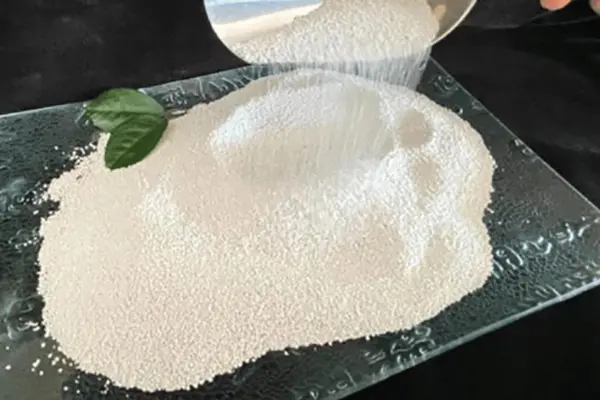Monocalcium phosphate is a common ingredient found in a variety of processed foods, and its role as a food additive has raised questions among consumers about its safety. Used primarily as a leavening agent in baked goods and as a source of calcium in some fortified foods, monocalcium phosphate plays an essential role in food production. But is it safe to eat? This article explores the uses, benefits, and potential risks of monocalcium phosphate to provide a clear understanding of its safety.
What Is Monocalcium Phosphate?
Monocalcium phosphate is a chemical compound made by reacting calcium oxide (lime) with phosphoric acid. The result is a fine, white powder that is easily dissolved in water, making it ideal for use in food products. As a food additive, monocalcium phosphate is commonly found in products such as baking powder, bread, cakes, and some cereals.
Its primary function is as a leavening agent. In baking, monocalcium phosphate reacts with baking soda to release carbon dioxide, which helps dough rise and creates a light, fluffy texture in baked goods. Additionally, monocalcium phosphate is used to fortify certain foods with calcium, improving their nutritional content.
The Role of Monocalcium Phosphate in Food Production
Monocalcium phosphate is highly valued in the food industry because of its versatility. In baking, it not only serves as a leavening agent but also contributes to the taste, texture, and stability of food products. Many commercially produced baked goods, including bread and muffins, rely on this additive for consistent results.
Beyond baking, monocalcium phosphate is sometimes added to animal feed to provide a source of calcium and phosphorus, both of which are essential nutrients for bone health. It can also be found in some processed meats, beverages, and canned foods, where it helps stabilize the texture and appearance of the product.
Is Monocalcium Phosphate Safe to Eat?
The use of monocalcium phosphate in food products has been thoroughly studied, and regulatory agencies around the world, including the U.S. Food and Drug Administration (FDA) and the European Food Safety Authority (EFSA), have classified it as safe for consumption. In the United States, monocalcium phosphate is listed as “Generally Recognized As Safe” (GRAS), meaning that it is considered safe when used by good manufacturing practices.
The EFSA has also evaluated the safety of monocalcium phosphate as a food additive and concluded that it poses no health risks when consumed in normal amounts. The typical quantities found in food products are well below any level that would cause concern for human health. The acceptable daily intake (ADI) for phosphates, including monocalcium phosphate, has been set by the EFSA at 40 mg per kilogram of body weight per day.
Health Benefits and Nutritional Value
One of the key benefits of monocalcium phosphate is its contribution to calcium intake. Calcium is essential for maintaining strong bones and teeth, as well as supporting muscle function and nerve transmission. Some foods are fortified with monocalcium phosphate to provide an additional source of calcium, particularly for individuals who may not get enough from their diet.
Moreover, phosphorus, which is a component of monocalcium phosphate, is also important for maintaining healthy bones and teeth. It plays a role in the body’s energy production and the formation of DNA and cell membranes. The inclusion of monocalcium phosphate in certain fortified foods can help improve the overall nutritional profile, particularly in populations that may be at risk for calcium or phosphorus deficiencies.
Potential Risks and Considerations
While monocalcium phosphate is considered safe in the amounts typically used in food, consuming excessive quantities of phosphate additives could potentially lead to health concerns. High levels of phosphorus intake over time may disrupt the balance of calcium and phosphorus in the body, which could negatively affect bone health. This is particularly relevant for individuals with kidney disease, as their kidneys may struggle to regulate phosphorus levels.
For the general population, the risk of consuming too much monocalcium phosphate through food is relatively low. The majority of people would need to consume large amounts of processed foods high in phosphate additives to exceed the recommended daily intake. However, it is always wise to maintain a balanced diet and avoid over-reliance on processed foods.
Conclusion
In conclusion, monocalcium phosphate is a safe and widely used food additive that plays a crucial role in food production. Its primary function as a leavening agent and source of calcium makes it valuable in many types of foods, particularly baked goods. Regulatory bodies like the FDA and EFSA have deemed monocalcium phosphate safe for consumption when used within approved limits.
While the additive offers some nutritional benefits, especially as a source of calcium and phosphorus, it’s important to consume it in moderation as part of a balanced diet. For most people, the levels of monocalcium phosphate found in everyday foods do not pose any health risks. However, individuals with specific health conditions, such as kidney disease, should monitor their phosphorus intake and consult with healthcare professionals if necessary. Overall, monocalcium phosphate can be safely enjoyed as part of a healthy diet.
Post time: Sep-12-2024











